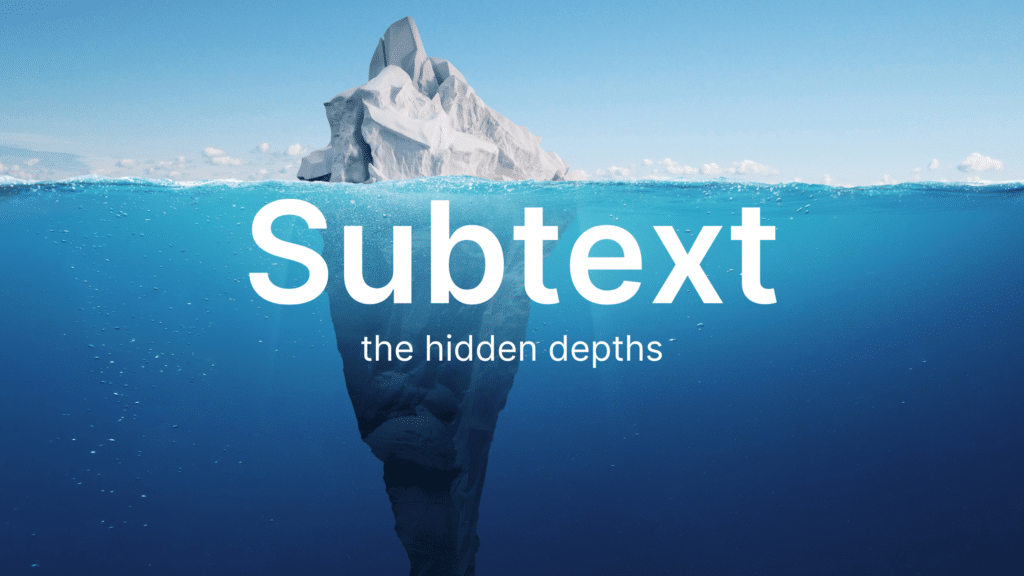
Introduction
In the storytelling world, what isn’t said is often as powerful as what is. Subtext, the unspoken meaning beneath the dialogue and action in a screenplay, is a critical tool in our screenwriter’s kit.
Subtext adds depth, intrigue, and emotional resonance. Whether it’s a flicker of doubt in a character’s expression or a loaded pause before a line of dialogue, subtext invites audiences to actively engage in the story. After all, reading between the lines is all part of the fun of going to the movies.
In today’s article, we’ll explore the definition of subtext, why it’s essential, and how to master it using specific techniques. As always, we’ll also highlight iconic examples of subtext in film, discuss common pitfalls in using subtext, and showcase how tools like Celtx can help you to create compelling, layered screenplays!
Let’s get cracking!

What is Subtext in Screenwriting?
Essentially, subtext is the underlying meaning or message in a scene that isn’t explicitly stated. It’s the difference between what a character says and what they actually mean.
We do this all the time in real life – say one thing and mean another, so it should be the same for our characters! Subtext can be conveyed through dialogue, body language and other visual cues. The pacing of a scene can also have a role to play in conveying subtext.
Okay, so why is subtext so important? Let’s break it down:
Emotional Resonance
While audiences can connect with characters based on what they say, subtext allows them to connect with characters on a deeper level. When viewers intuitively notice the unspoken, it mirrors real-life communication where we often conceal our true emotions or intentions.

Audience Engagement
When our characters leave things unsaid, this makes our audiences more active participants in the story. They’re drawn further into the scene, feverishly trying to piece clues together and understand the full picture.
Just think – it’s like every movie’s a murder mystery just waiting to be solved every time!
Complexity and Realism
As we’ve said, in real life, we all rarely say what we actually mean. Subtext mirrors the complexities of human communication. When we employ subtext in our own writing, our characters feel more human and authentic.
Craft compelling scripts with Celtx. Try it today!
Iconic Examples of Subtext
So, we now know the role of subtext and the effect it can have on our characters and stories as a whole. Next let’s take a look at some of the most iconic moments in film and television where the unsaid carried as much weight as the spoken!
Casablanca – “Here’s looking at you, kid.”
One of the most famous movies of all time, Casablanca is filled to the brim with subtext. In particular, Rick Blaine’s seemingly casual toast to Ilsa “Here’s looking at you, kid,” carries layers of subtext.
On the surface, it seems to simply be a charming line of affection. But beneath it is a whirlwind of emotions: longing, regret, and the weight of Rick and Ilsa’s shared history.
The phrase has become one of the most recognizable in Hollywood, and a touchstone throughout the movie. It’s subtle shift in meaning depends on the context, but it always hints at Rick’s unspoken love for Ilsa.
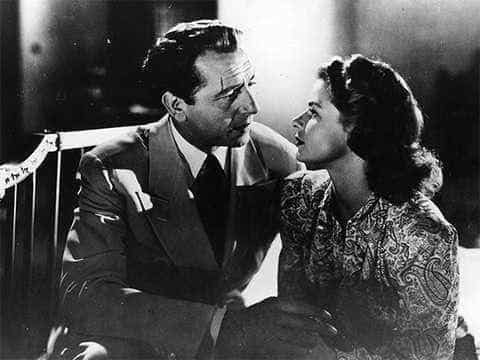
Breaking Bad – “I am the one who knocks.”
Protagonist, Walter White’s assertion, “I am the one who knocks,” is on the surface, about his role as the family protector. But the subtext of his words reveals something much darker: Walter’s growing ego and moral corruption.
He’s no longer protecting his family but asserting dominance, a dominance fueled by his transformation into a criminal mastermind. The delivery of this line is measured, chilling and filled with rage, which underpins the unspoken message that Walter has indeed become the very danger he claims to shield his family from.
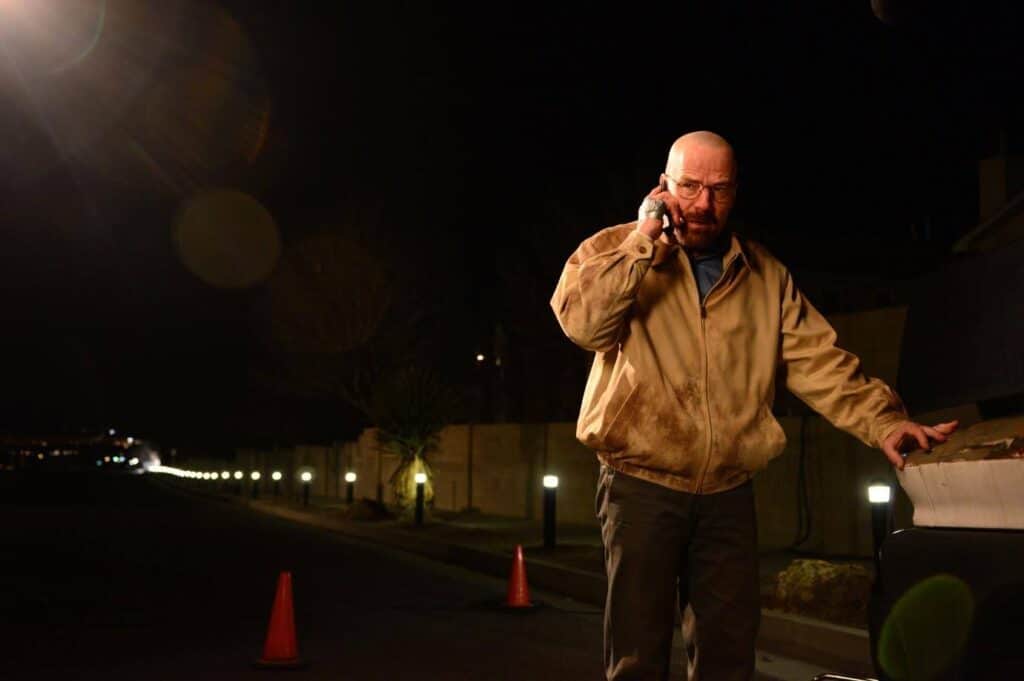
Writing between the lines? Celtx can help you refine your story.
The Graduate – Final Scene
The ending of The Graduate is a masterclass in writing subtext. After Ben and Elaine flee her wedding, they are initially euphoric, taking over the back seat of a bus. But slowly, their expressions change; they’re more uncertain, even somber.
As we see from the clip, without a word, the subtext speaks volumes. We see the weight of Ben and Elaine’s decision, their unknown future and their dawning realization that love alone may not be enough.
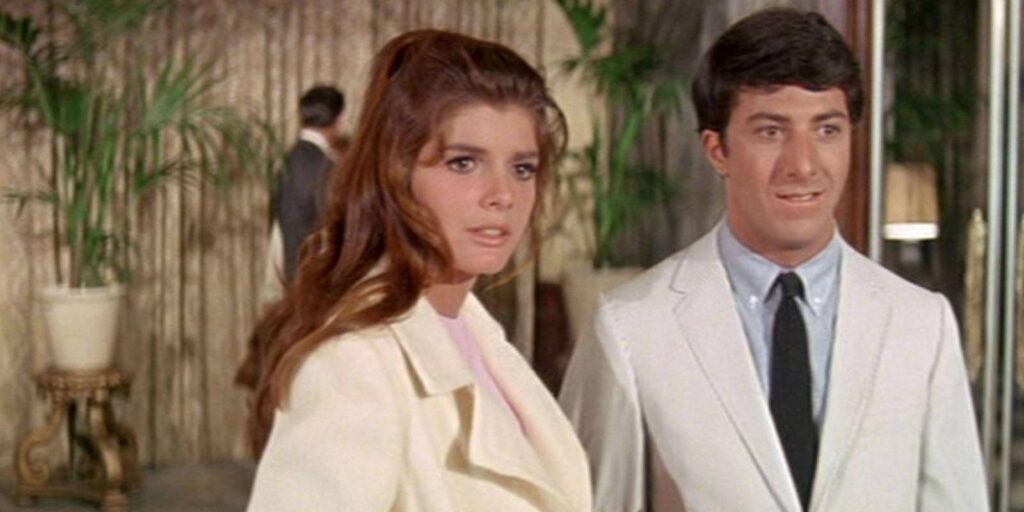
The Office – Jim and Pam’s Snatched Glances
Jim and Pam’s developing relationship in The Office is one of television’s most beloved. Jim Halpert’s long looks at Pam Beesly often say more than words ever could.
It’s these stolen glances that are rich with subtext, whether it’s the unspoken confession of his feelings, his disappointment in her choices, or his hope for a future together. The quiet, understated moments between them is what makes their eventual union even more satisfying to us as an audience.
Related – Sitcom Showdown: Modern Sitcoms and Their Global Counterparts
Techniques for Writing Subtext
Writing subtext can feel daunting as it requires restraint and precision. It’s very tempting to write all-revealing dialogue for our characters and show exactly how they’re feeling at any given time as we don’t want our audiences to miss anything.
The trouble is, if we omit subtext altogether, our characters don’t feel authentic or multi-faceted. To make the most of subtext, here are some techniques to help you weave it into your screenplays.
Use Body Language Cues
A character’s physical actions can often reveal more than what they say. One may say “I’m fine,” while avoiding eye contact, crossing their arms, or fidgeting. What’s clear from their body language is that they totally aren’t fine!
In this clip from The Social Network, Mark Zuckerberg’s rigid posture and clipped responses during the deposition conveys his defensive insecurities, even if he displays arrogance on the outside.
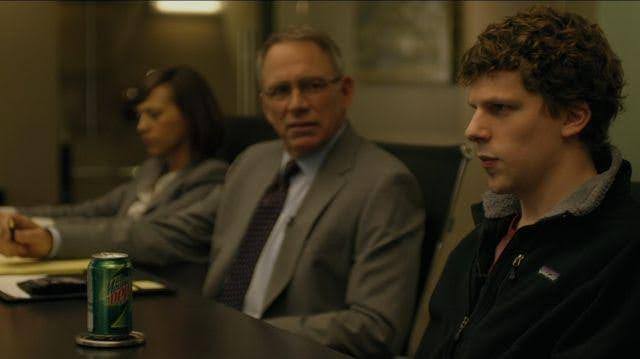
Embrace Pauses and Silences
Silence can be just as impactful as dialogue. A long pause before a response can hint at hesitation, doubt, or suppressed emotions. Here is where subtext can thrive, just like this moment in Pulp Fiction.
In this scene, Mia Wallace’s pause before asking Vincent Vega about his uncomfortable silence speaks to the tension and chemistry simmering between their playful banter.
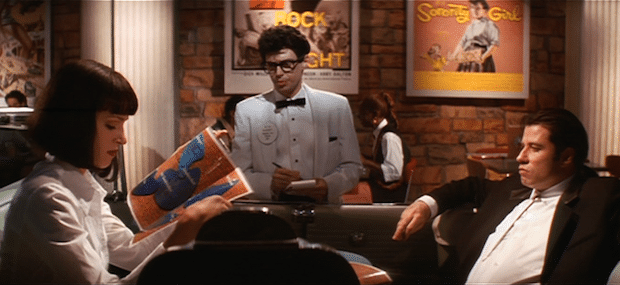
Celtx Beat Sheet can help you avoid on-the-nose dialogue. Try it today for free!
Create Tension using Dialogue
Subtext in dialogue often hinges on characters speaking past each other. They may avoid a topic altogether, deflect using humor, or choose their words carefully to conceal their true feelings, like during Harry and Sally’s early debates about relationships in When Harry Met Sally.
These early scenes in the movie are loaded with subtext, hinting at Harry and Sally’s eventual romantic compatibility.
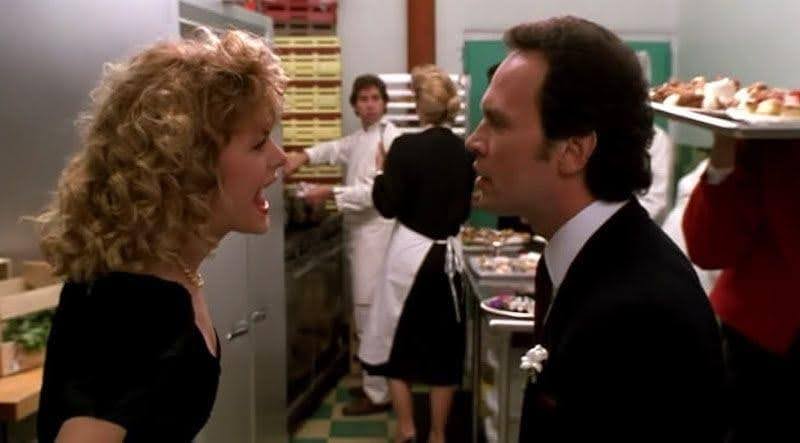
Utilize Visual Metaphors
Sometimes we need to look beyond our characters and consider how visual elements in a scene can add another layer of subtext. A storm raging outside could reflect a character’s inner turmoil, or a fading photograph on a mantel could symbolize an unravelling relationship.
American Beauty employs visual metaphor extremely well:
The video clip of the plastic bag swirling in the wind symbolizes beauty and fragility amid the chaos, conveying Ricky’s feelings with no words needed.
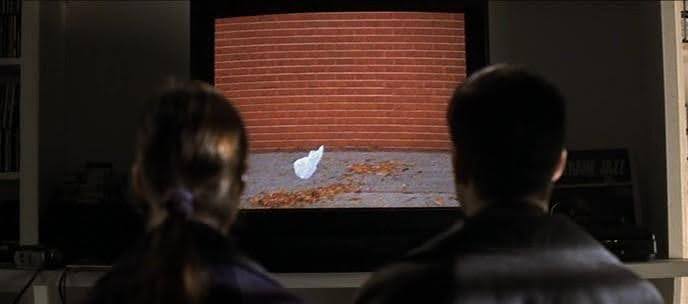
Show Internal Conflict
Through character’s wrestling with their conflicting desires or emotions, subtext often emerges. These internal struggles can be revealed through subtle actions, like hesitation before answering a question, or a forced smile during an emotional moment.
The baptism scene in The Godfather is an especially good example of this. As Michael solemnly recites the baptismal vows in the church, his men are committing brutal murders under his orders.
Here the subtext is clear as Michael outwardly pledges loyalty to God and renounces sin, his inner conflict is revealed through the juxtaposition of his serene demeanor and the violent actions unfolding on his command. Here we see Michael suppress his guilt as he embraces the life, he once tried so hard to escape.
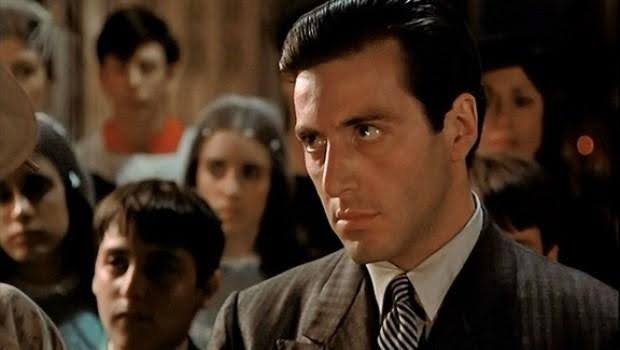
Common Mistakes to Avoid
While subtext is a fantastic way to elevate our writing, if not done right, it can confuse audiences or lessen its impact.
As always, there are some pitfalls to watch out for when writing subtext. Firstly, it thrives on subtlety, so over-explaining a character’s emotions or motivations can strip the scene of mystery and engagement. As writers, we must allow the audience to fill in the blanks themselves.
For example, in a romantic scene, showing a character fiddling nervously with a ring is often much more effective than a long monologue where they voice their fear of commitment. Just like this scene from Pride and Prejudice:
In Elizabeth and Mr. Darcy’s intense argument, we see, although Elizabeth initially rejects his profession of love outright, we see her body language and facial expressions reveal an internal struggle that she does not voice.
From Mr. Darcy’s side of the heated discussion, we see him visibly struggle to speak with his jaw tight, breaking eye contact at times when Elizabeth voices her upset. Additionally, the rainstorm mirrors the whirlwind of emotions bubbling underneath both the character’s words.

Of course, there is also the danger of being too vague in our subtext. Balance is key! It shouldn’t be so obscure that the audience has no clue what’s going on. If the subtext isn’t clear enough, it risks frustrating viewers.
Context also plays a crucial role in successfully conveying subtext. A line or gesture’s meaning can shift depending on what’s come before. If we fail to ground subtext within the broader narrative of our stories, it can feel illogical or disconnected.
Atonement uses context to inform the subtext between Cecelia and Robbie in the library scene. The charged silences, fleeting glances, and nervous energy between these two characters is built upon their shared history of suppressed attraction and societal boundaries.
The unspoken tension between them carries a lot of weight, with every hesitant move and look reflecting their shared memories that have built up throughout the film.
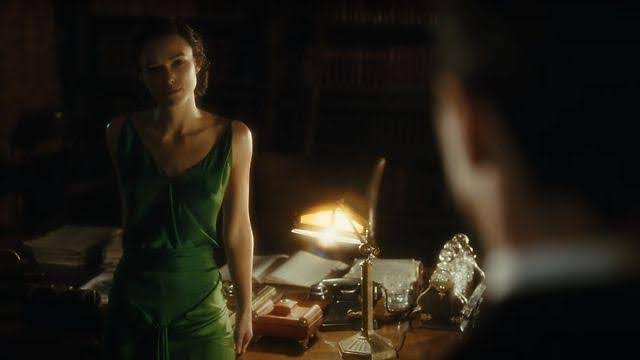
How Celtx Helps Writers Craft Subtext
We all need a helping hand along the way to writing our screenplays. From subtext to character motivations, crafting dialogue, to formatting, Celtx’s screenwriting tools are here to help you fine-tune your writing.
Feedback is invaluable for any writer, and ensuring your subtext comes through clearly is crucial! Our collaborative feedback tools allow you to share your scripts with collaborators who can add their notes and suggestions directly onto the text.
If you also need to leave notes for yourself, annotate directly onto your screenplay using our annotation tools. These notes can hep you ensure that subtle layers of subtext remain consistent all the way through the story.
Our breakdown tools also allow you to organize scenes by their emotional beats and subtextual goals. Seeing the story’s structure can highlight where subtext is working – or not!
Whatever your screenwriting need, Celtx has it covered. Check out how we can support your next project here.
Conclusion
Mastering subtext is essential for creating stories that captivate and resonate with audiences long after the credits roll. It’s about inviting viewers to engage with our stories on a deeper level, translating the layers of meaning beneath the surface.
Whether through loaded silences, nuanced body language, or visual metaphors, subtext brings authenticity and complexity to our screenplays.
As a screenwriter, crafting subtext takes practice, patience, and the right tools. By employing a range of techniques and leveraging resources like Celtx for collaboration and refinement, you’ll be well on your way to creating screenplays that speak volumes.
Now, go let your subtext shine!
Learn more about the elements of a screenplay:
- How to Format a Script
- How to Write a Logline
- What is a Storyboard? The Basics of How to Get Started

